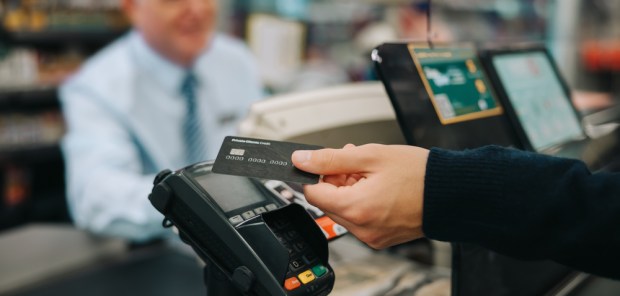
The debate over interchange is now fully underway (again) on Capitol Hill.
The question remains as to what happens with rewards programs — the sweeteners, you might call them — that are among the favored reasons for consumers, especially older consumers, to keep using their cards for everyday spending.
The popularity of rewards is underscored by PYMNTS Intelligence data that showed boomers and seniors are among the most avid users of rewards, as 71% of them said they use credit for the loyalty programs. Most younger consumers said the same, at 59.3% of Generation X consumers and 57.1% of millennials. Roughly half of Generation Z individuals claimed that rewards are a key driver of credit use.
As banks generate revenues from the interchange activity (also known, broadly, as merchant swipe fees), rebating the equivalent of those fees gives consumers an incentive to spend. For the banks, the benefit lies in growing the credit card loan portfolio, realizing the ancillary streams of revenue tied to servicing those loans, and “cross-selling” other financial products and services to those same consumers.
The great unknown is what will happen if those fees are truncated, as noted above. That can come through caps (and debit interchange caps seem fully on the table via the Federal Reserve).
In addition, the Credit Card Competition Act mandates that there be two competing networks for processing merchant transactions, which conceivably might steer transactions away from Visa and Mastercard.
In the meantime, as issuing banks look to gain customer favor through cash back and travel miles, this week, Sens. Dick Durbin of Illinois and Roger Marshall of Kansas, who sponsored the re-introduction of the CCCA, are asking regulators to examine airline loyalty programs (including points and other perks).
A Federal Reserve study from September 2022 noted that issuers get about 1.3 cents in transaction fees (which would include interchange) for each dollar of consumer purchases made on cards. The expenses tied to the rewards programs, the Fed found, came in at 1.5 cents per dollar of card-related purchases.
It may be the case that eliminating or curtailing the interchange component of fees would make rewards that much more expensive — and thus ripe for banks to target as an area to scale back. Or it may be the case that banks look to cut costs elsewhere, to keep rewards programs in place, and with the perks that have become desirable to consumers.
In a study from George Mason University titled “Price Controls on Payment Card Interchange Fees: The U.S. Experience,” an examination of the impact of the Durbin Amendment mandates that cut debit interchange caps revealed that interchange fee income dropped by 34%.
“[I]t is unambiguous that banking fees and other fees rose after the passage of the Durbin Amendment and that eligibility for free current accounts declined,” the authors wrote.
It remains to be seen if past will be prologue this time around, but the debate over interchange fees, and the ripple effect of changes, is only going to get louder.